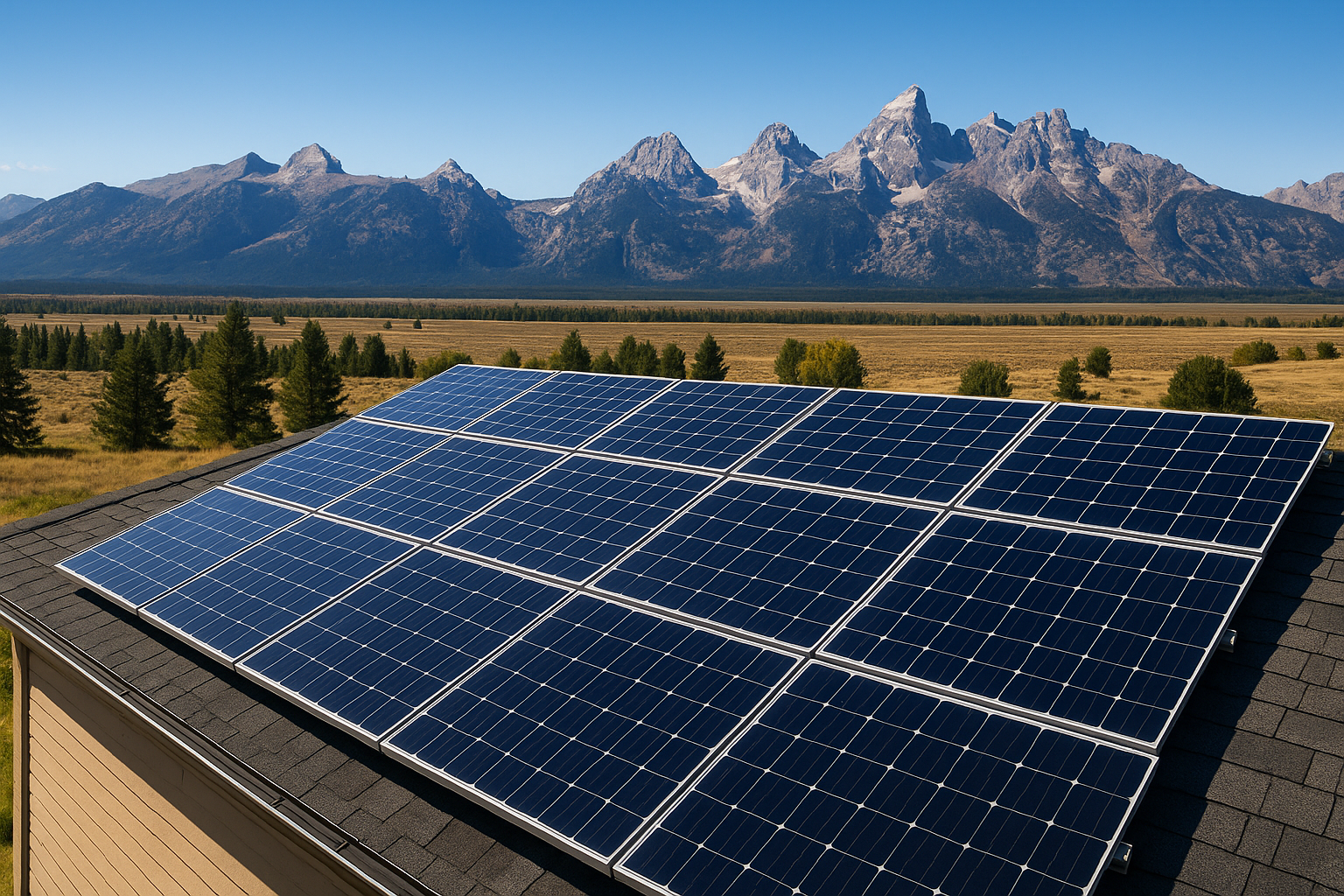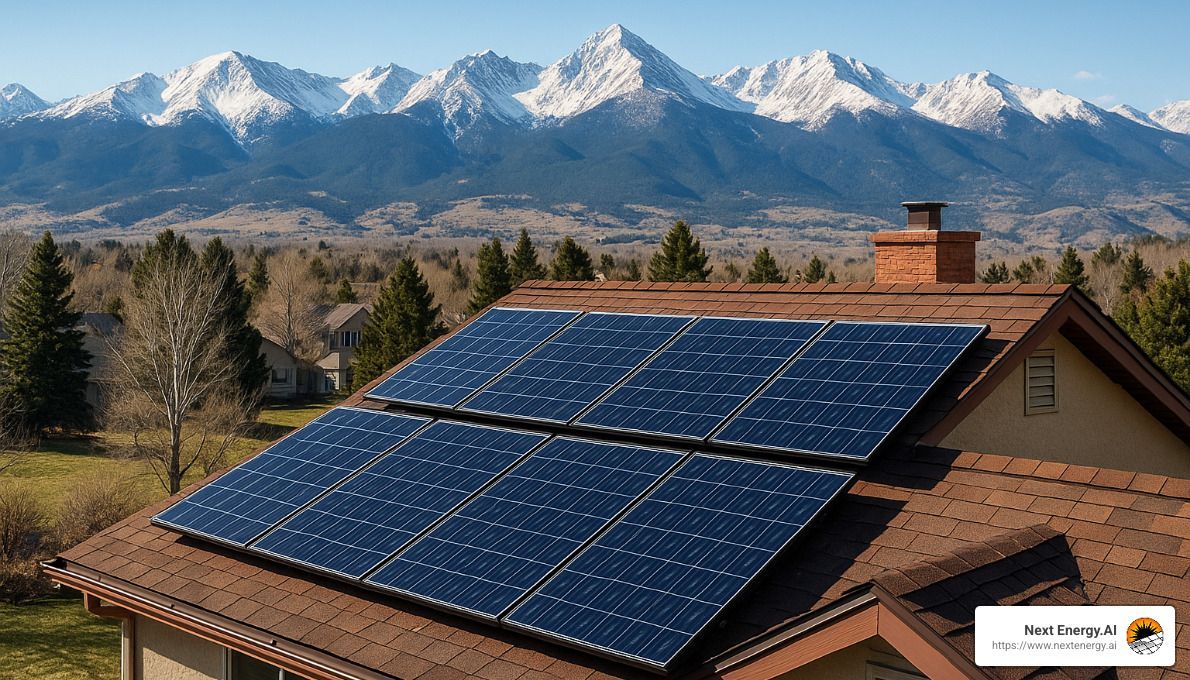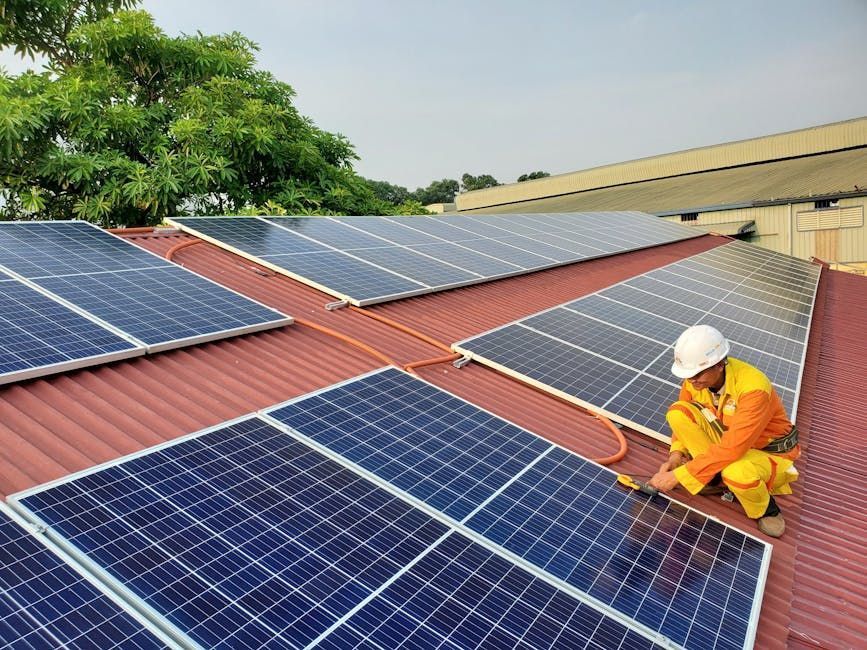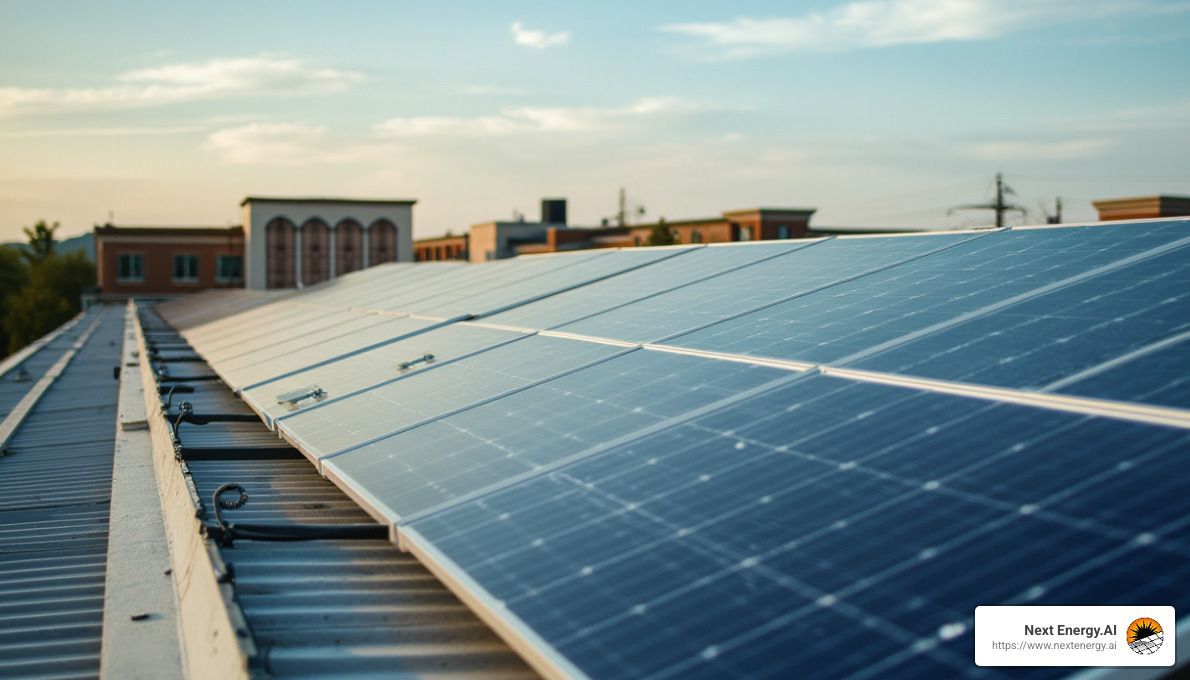Bright Future, Dark Side: Solar Energy's Environmental Impact
Solar energy environmental impact is an increasingly vital topic as the world shifts towards renewable energy solutions. Solar power, while key in reducing greenhouse gas emissions and promoting energy independence, comes with its own set of environmental considerations. Here's a quick overview of its impacts:
- Positive Impacts:
- Reduces greenhouse gases
- Improves air quality
- Improves energy independence
- Negative Impacts:
- Land use and habitat disruption
- Manufacturing involves hazardous materials
- Limited energy production during nighttime and cloudy days
Solar energy embodies a promising step toward a sustainable future, yet it requires a balanced approach to fully mitigate its environmental drawbacks.
As Spencer Gordon, CEO of Next Energy.AI, my expertise in solar energy environmental impact stems from years of experience in providing sustainable energy solutions throughout Northern Colorado. Our commitment is to empower communities with clean energy while minimizing ecological footprints.

Positive Environmental Impacts of Solar Energy
Solar energy is a game-changer in the quest for a cleaner, more sustainable world. Let's explore some of the key positive impacts it brings:
Greenhouse Gas Reduction
One of the most significant benefits of solar energy is its ability to reduce greenhouse gas emissions. Unlike fossil fuels, solar power doesn't release harmful pollutants like carbon dioxide, nitrogen oxides, or sulfur dioxide into the atmosphere. This reduction in emissions helps combat climate change and contributes to a healthier planet.

Air Quality Improvement
By reducing reliance on fossil fuels, solar energy plays a crucial role in improving air quality, especially in urban areas. Traditional energy sources contribute to smog and air pollution, which can lead to respiratory problems and other health issues. Solar panels, on the other hand, generate clean energy without emitting any pollutants, helping to clear the skies and promote better health for city dwellers.

Energy Independence
Solar energy contributes to energy independence by using a free and abundant resource—the sun. By installing solar panels, homeowners and businesses can generate their own electricity, reducing reliance on external energy sources. This not only lowers energy bills but also improves energy security by lessening dependence on imported fuels.
In the U.S., solar installations have been booming, with more than 19 gigawatts of capacity added recently. This growth is expected to continue, driven by favorable policies and incentives, such as the 30% tax credit available in 2024. As more people adopt solar energy, communities become more resilient and less vulnerable to energy supply disruptions.
Solar energy's positive environmental impacts are undeniable. Its ability to reduce greenhouse gases, improve air quality, and foster energy independence makes it a cornerstone of sustainable development. But what about the challenges that come along with it? Let's explore the other side of the coin in the next section.
Negative Environmental Impacts of Solar Energy
While solar energy offers many benefits, it also has some environmental downsides that need careful consideration.
Land Disturbance
Utility-scale solar farms require large tracts of land to capture sunlight effectively. This can lead to significant land disturbance, particularly in rural areas. For example, solar facilities can interfere with existing land uses like agriculture and wildlife habitats. In some cases, developers must clear land of trees and vegetation, which can cause erosion, especially during heavy rains. A landowner in Texas expressed concerns about soil erosion from a planned solar plant affecting the nearby Bosque River.
To mitigate these impacts, developers are encouraged to use already disturbed lands, such as brownfields or parking lots, to minimize habitat loss and land degradation.
Hazardous Materials
The production and disposal of solar panels involve hazardous materials, similar to those found in electronics. Solar panels contain substances like cadmium and lead, which can be harmful if not managed properly. When panels reach the end of their life, improper disposal can lead to soil and water contamination.
To address this issue, recycling technologies are being developed to safely reclaim materials from old solar panels. By recycling, we can reduce the environmental footprint and prevent potential harm from hazardous waste.
Ecosystem Disruption
The installation of solar farms can disrupt local ecosystems. Clearing large areas for solar panels can lead to habitat loss for plants and animals. This is particularly concerning when it affects sensitive or endangered species. The disruption of natural drainage patterns can also impact local water resources.
Developers can reduce ecosystem disruption by implementing construction best practices and using local materials. By carefully selecting sites and managing construction activities, it's possible to minimize the ecological impact of solar installations.
Solar energy is a powerful tool in the fight against climate change, but we must be mindful of its potential negative effects. Understanding these impacts allows us to find better ways to harness solar power sustainably. Let's now explore strategies to mitigate these environmental challenges in the next section.
Solar Energy Environmental Impact: Mitigation Strategies
Solar energy is a crucial part of our transition to cleaner energy sources, but like any technology, it comes with its own set of challenges. Fortunately, there are strategies to mitigate these solar energy environmental impacts effectively.
Site Selection
Choosing the right location for solar installations is key to minimizing environmental harm. By prioritizing already disturbed lands, such as brownfields, parking lots, or rooftops, developers can reduce the need to clear natural habitats. This approach not only preserves ecosystems but also addresses community concerns about land use. For instance, the use of existing infrastructure helps avoid conflicts with agricultural lands or wildlife areas, making solar projects more community-friendly.
Recycling Technologies
Solar panels have a lifespan of about 25-30 years, and proper disposal is essential to avoid environmental issues. Thankfully, advancements in recycling technologies are paving the way for more sustainable solutions. Recycling programs can reclaim valuable materials like silicon, silver, and aluminum from old panels, reducing waste and preventing hazardous substances from entering landfills. This not only lessens the environmental footprint but also supports a circular economy by reintroducing materials into the production cycle.
Water Management
Water use is another important consideration, especially in arid regions where solar farms are often located. Traditional solar thermal plants can consume significant amounts of water for cooling. To mitigate this, developers can implement efficient water management systems, such as dry cooling technologies or closed-loop systems, which drastically reduce water usage. Additionally, using non-potable water sources or recycled water can further alleviate pressure on local water supplies.
By adopting these mitigation strategies, we can harness the benefits of solar energy while minimizing its environmental impacts. As we explore more ways to use this clean energy source, balance development with ecological preservation. In the next section, we'll address some frequently asked questions about the environmental impact of solar energy.
Frequently Asked Questions about Solar Energy Environmental Impact
How does solar energy affect the environment?
Solar energy is a game-changer when it comes to reducing greenhouse gas emissions. Unlike fossil fuels, solar panels generate electricity without burning anything, which means they don't release carbon dioxide or other harmful gases. This makes solar energy a powerful tool in climate change mitigation. By using the sun's energy, we can cut down on air pollution and help keep our planet cooler.
However, there are some concerns. The production of solar panels involves materials that can be hazardous if not handled properly. For instance, they contain substances like cadmium and lead, which need careful management to avoid environmental contamination.
What is the biggest problem with solar energy?
The most significant challenge with solar energy is intermittency. Solar panels only produce electricity when the sun is shining. This means that on cloudy days or at night, they can't generate power. This intermittency can cause issues with energy supply, especially if there's no effective way to store the excess energy produced during sunny periods.
To address this, many are investing in batteries and other storage technologies that can hold solar energy for use when the sun isn't shining. This helps ensure a steady supply of electricity, even when the weather doesn't cooperate.
What are the positive and negative impacts of solar energy?
Positive Impacts:
- Pollution Reduction: Solar energy significantly cuts down on air pollutants, improving air quality and public health.
- Energy Independence: By using sunlight, countries can reduce their reliance on imported fossil fuels, enhancing energy security.
Negative Impacts:
- Land Disturbance: Large solar farms can take up a lot of space, potentially disrupting local ecosystems and wildlife.
- Hazardous Materials: As mentioned, solar panels contain materials that need to be disposed of properly to avoid environmental harm.
Balancing the positive and negative impacts of solar energy is crucial. With ongoing advancements in technology and thoughtful planning, we can maximize the benefits while minimizing the drawbacks.
In the conclusion, we'll explore how Next Energy.AI is leading the charge in optimizing solar solutions with advanced AI technologies.
Conclusion
At Next Energy.AI, we believe that the future of energy is not just bright—it's intelligent. We are at the forefront of changing solar panels into smart energy management systems. By integrating advanced AI technology, we optimize energy usage, ensuring that every ray of sunlight is used efficiently.
Our AI-improved solar solutions are designed to tackle the challenges of solar energy, like intermittency and energy storage, head-on. By analyzing energy consumption patterns, our systems adjust for weather conditions and seasonal changes. This adaptability ensures that your solar panels operate at peak efficiency, providing a steady supply of energy even when the sun isn't shining.
Moreover, we understand the importance of solar energy environmental impact. That's why we are committed to sustainable practices, from site selection to recycling technologies. Our approach not only reduces the carbon footprint but also addresses concerns about hazardous materials and land disturbance.
By choosing Next Energy.AI, you are not only opting for cutting-edge technology but also contributing to a cleaner, greener planet. Our solutions are custom to meet the unique needs of each client, ensuring both economic and environmental benefits.
Ready to harness the power of the sun with intelligent energy solutions? Explore our services in Highlands Ranch and join us in leading the way to a sustainable future.
Together, let's illuminate the path to a smarter, more sustainable world.


















